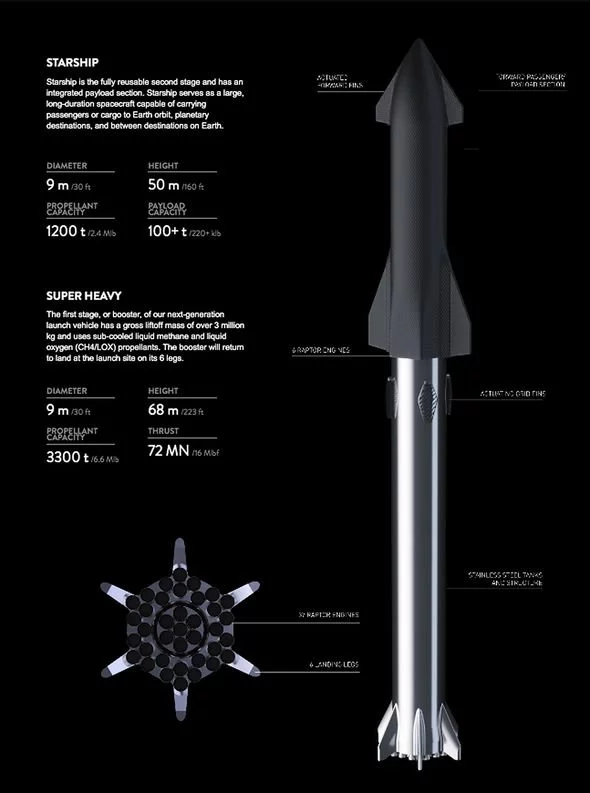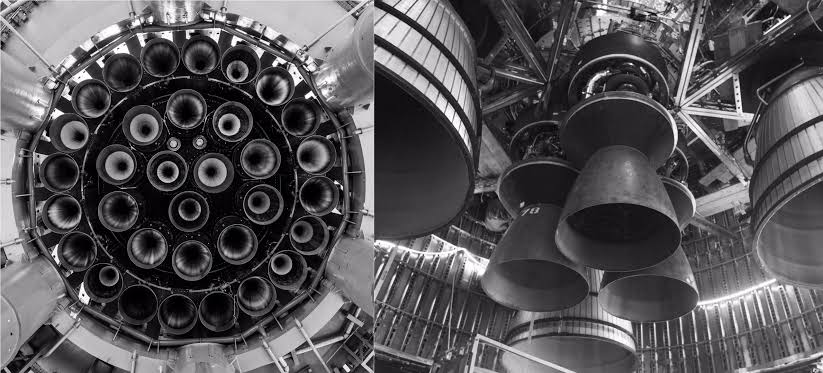SpaceX, the aerospace manufacturer founded by tech entrepreneur Elon Musk, has been making headlines in recent years with its ambitious plans for space exploration and colonization. Central to these plans is the development of the Starship spacecraft, a fully reusable launch vehicle designed to transport humans and cargo to the moon, Mars, and beyond.
One of the key components of the Starship spacecraft is its engines. In this article, we will provide a complete overview of SpaceX’s Starship engines, including their design, capabilities, and development timeline.
Design of SpaceX’s Starship Engines

The design of the SpaceX’s Starship engines is a crucial component of the ambitious space exploration plans of SpaceX. The engines are designed to provide the power and efficiency necessary to propel the Starship spacecraft through the vacuum of space and to land it safely on the surfaces of other planets and moons.
The SpaceX’s Starship engines are powered by liquid methane and liquid oxygen, which provide a number of advantages over traditional rocket fuels. For example, liquid methane is a cleaner burning fuel than traditional fuels like kerosene, which helps reduce the environmental impact of spaceflight. In addition, liquid methane is more readily available on other planets and moons, which makes it a more practical fuel choice for long-duration space missions.
The SpaceX’s Starship engines are also designed to be highly efficient, with a specific impulse (a measure of engine efficiency) of up to 380 seconds. This means that the engines can use less fuel to achieve the same amount of thrust, which is essential for long-distance space missions. In addition, the engines are capable of being throttled up or down as needed during flight, providing precise control over the spacecraft’s velocity and trajectory.
The SpaceX’s Starship engines are arranged in a cluster of six, which are used for both atmospheric and vacuum operations. The engines are arranged in a circular pattern around the base of the spacecraft, which provides both thrust and control during flight. This arrangement also allows for redundancy in case of engine failure, which is critical for the safety of the crew and the success of the mission.
Another important aspect of the design of the Starship engines is their reusability. Each engine is designed to be reusable for up to 100 missions before needing to be refurbished, which is a significant improvement over traditional rocket engines that are typically discarded after a single use. The reusability of the Starship engines helps to reduce the cost of spaceflight and makes long-term space exploration and colonization more feasible.
Capabilities of SpaceX’s Starship Engines
The Starship engines developed by SpaceX are a marvel of engineering, providing the power and precision necessary to propel the spacecraft through the vacuum of space and land it safely on other planets and moons. The engines have a number of remarkable capabilities that make them ideal for long-distance space exploration and colonization.
One of the key capabilities of the Starship engines is their power. The engines are capable of producing up to 2,000 metric tons of thrust, which is more than any other rocket engine currently in use. This immense power allows the spacecraft to achieve escape velocity and travel to other planets and moons in our solar system.

Another important capability of the Starship engines is their efficiency. The engines use a mixture of liquid methane and liquid oxygen as fuel, which provides a number of advantages over traditional rocket fuels. For example, liquid methane is a cleaner burning fuel than kerosene, which reduces the environmental impact of spaceflight. In addition, liquid methane is more readily available on other planets and moons, which makes it a more practical fuel choice for long-duration space missions.
The SpaceX’s Starship engines are also designed to be highly versatile. They are arranged in a cluster of six engines, which can be throttled up or down as needed during flight. This provides precise control over the spacecraft’s velocity and trajectory, and also allows for redundancy in case of engine failure. The engines are capable of both atmospheric and vacuum operations, which makes them suitable for both Earth-based launches and deep space exploration.
Another important capability of the Starship engines is their reusability. Each engine is designed to be reusable for up to 100 missions before needing to be refurbished, which is a significant improvement over traditional rocket engines that are typically discarded after a single use. The reusability of the engines helps to reduce the cost of spaceflight and makes long-term space exploration and colonization more feasible.
Related: How SpaceX’s Starship will handle Space Tourism?
Development Timeline of Starship Engines
The development of the Starship engines by SpaceX has been a long and challenging process, marked by setbacks, triumphs, and constant innovation. The timeline of the development of the engines is a testament to the dedication and ingenuity of the SpaceX team.
The initial concept for the Starship engines was first proposed by Elon Musk in 2012, as part of his ambitious plans to create a reusable spacecraft capable of transporting humans and cargo to Mars and other destinations in our solar system. The development of the engines began in earnest in 2016, with the creation of the Raptor engine, which uses a mixture of liquid methane and liquid oxygen as fuel.

The first successful test of the Raptor engine took place in 2019, with the engine producing over 200 metric tons of thrust during a 51-second test firing. This marked a significant milestone in the development of the Starship engines, as it demonstrated the power and efficiency of the engine in a real-world test.
Since then, the development of the Starship engines has continued at a breakneck pace. The engines have undergone numerous design iterations and testing regimens, with each new version incorporating the latest advances in engine technology and materials science. In 2020, the SpaceX team successfully conducted a 150-meter hop test of the Starship prototype, with the Raptor engines providing the thrust necessary to lift the spacecraft off the ground and land it safely back down.
In 2021, the development of the Starship engines reached a new milestone, with the successful launch and landing of the Starship SN15 prototype. The Raptor engines performed flawlessly during the flight, providing the power and control necessary to bring the spacecraft back to Earth and land it safely on the landing pad.
Looking to the future, SpaceX is continuing to refine and improve the Starship engines, with the ultimate goal of creating a reliable, reusable, and efficient engine that can transport humans and cargo to Mars and beyond. With each new success and setback, the SpaceX team is pushing the boundaries of what is possible in space exploration, and inspiring a new generation of engineers, scientists, and explorers to reach for the stars.
Conclusion
To sum up, the SpaceX’s Starship engines developed by SpaceX play a crucial role in the company’s ambitious plans for space exploration and colonization. The Raptor engines are designed to be highly efficient, powerful, and versatile, while also being fully reusable. Although the development process of these engines has been long and complex, SpaceX is making significant progress towards its ultimate goal of enabling humans to become a multi-planetary species.
